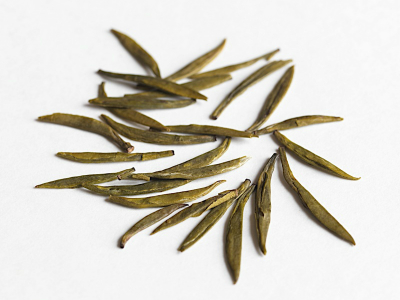Yellow Tea: Fermented or Oxidised?
Yellow tea has for several years presented tea lovers with a bit of a puzzle. Small producers in China still keep their exact manufacturing process as a trade secret. Towards the end of the 1990s, when we were first drinking it, there was virtually no information available about the processing steps and we were confused: was it was a fermented tea (like Puerh), or a lightly oxidized tea? Those of us involved in tea education discussed what we knew about the method and the flavour profile, and concluded it was lightly fermented, which is what UKTA has been teaching for the past three years.
But now, having carried out more research, we find that we were wrong and would like to offer an apology for giving you the wrong information.
Different yellow tea producers use varying methodology but the basic steps are as follows:
- The freshly plucked buds or shoots are withered briefly, in the same way that green tea is given a short wither in order to evaporate a little of the water in the leaves and buds.
- The tea is panned to stop oxidation, but at a lower temperature than is used for panning green tea (the wok temperature for green tea is usually about 200º C – 280º C; the wok temperature for yellow tea is usually about 120º C – 150º C).
- While hot and damp, the tea is removed from the wok and is wrapped in paper or cloth to provoke a step called ‘Men Huang’ (闷黄) or ‘Sealing Yellow’. During this stage, the tea undergoes non-enzymatic oxidation, which reduces the vibrant grassy character of the tea and develops instead a gentler, sweeter, more mellow smell and flavour. The length of time that the tea is wrapped varies according to the producer and the type of yellow tea being made.
- After the first wrapping, the tea is returned to the wok for a second panning and, while still warm and damp, the tea is wrapped again to provoke a second stage of non-enzymatic oxidation. This heating and wrapping may be repeated several times.
- The tea is sometimes rolled or pressed to develop flavour but this does not always happen.
- Finally, the tea is dried.
What is non-enzymatic oxidation?
Non-enzymatic oxidation occurs in yellow tea after the initial panning when the leaves are heaped or wrapped in cloths (Men Huang) and kept warm for a few hours.
The resulting change in colour and flavour of the tea is due to what is called the ’Maillard’ reaction. This reaction occurs between sugars and amino acids present in the leaves but does not require oxygen.
The Maillard reaction occurs either at high temperatures or as a result of prolonged heating. In yellow tea, it is provoked by the extended heating during the repeated heaping or wrapping stages.
Enzymatic oxidation takes place when enzymes in the tea (or food) react with oxygen in the air. This causes browning in tea leaves (or in foods such as a cut apple, avocado, pear, etc).




